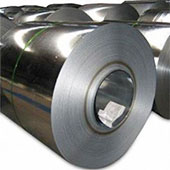Design Course
Sheet Metal
Fabrication Technology in Product Design
by
Refinement means addressing the factors earlier noted but not addressed and anomalies not corrected. Refinement makes the design production worthy. Refinement is a process that is beyond simulation and ends with documentation.
There are three distinct functions in the product realization chain -product design, process design, and process execution. The interface between these three functions is also critically analyzed.
Example: Electronic Enclosure

Original Prototype
The electronic components are in place on a single PCB with an output connector on one side and a power switch on the other side. The product has mandatory projecting flanges with holes to connect to a panel. The other customer requirement is it must be drizzle proof if not watertight. The prototype fabricated box served the purpose well to demonstrate the successful function to the customer.

Example of Refinement: Redesigned and refined final design with the same inside components.
A deep-drawn casing that mates with a bottom plate are the design refinement. Electronics are fitted to the bottom plate aligning with the mating connector. The cut-out slots for the connector and the power switch are snap-fitted with a moulded plastic component to make the enclosure drizzle-proof. The panel fixing flanges are integrated with the casing.
Following are some of the factors to be considered while in the process of refining a design:
1. Check Access

(Wellness, Bangalore)
Design should allow components of the product to be assembled in a particular sequence. The product may have to be opened for service and maintenance at periodic intervals. Cutouts for doors, hatch doors, portholes, etc., must be planned in advance at the right places. Many times we observe anomalies after full assembly such as deviations from optimal positions. In such cases provision must be made for necessary hardware such as special tools to access parts.
2. Review Hardware
There are many kinds of knobs, wheels, handles, stoppers; gaskets, and so on of different sizes and designs that come into the picture to complete the product. It is important to refer to actual technical data sheets to properly incorporate such elements. After works and patchworks should be avoided.
3. Explore Repeatability of Parts
It is useful to design parts for repeatability. One can plan to use the same parts and the fixing mechanisms to suit a family of products. This helps in saving time and effort, reduces inventory costs, and further helps to establish product identity.
Family of products using common parts
4. Explore Modularity

Modular sheet metal components are in use for identity as well.
Modularity is the degree to which a system's components may be removed and recombined to give the benefit of flexibility and variety in use.
Modularity is particularly important in product design. It allows easy replacement. It reduces inventory costs. It also helps in generating new product concepts using a particular module.
5. Optimization
There are many variables in the whole path of design to manufacturing. They are primarily materials, manufacturing processes, direct and indirect labour, and capital expenditure. The interrelationships are complex. They must be carefully balanced by exploring alternates in optimizing the design during the detailing phase.
- Introduction
- Overview of Sheet Metals
- Manufacturing Process
- Sheet Metal Joinery
- Sheet Metal Assembly
- Sheet Metal Finishes
- Design Methodology
- The Design Process
- Design Brief
- Preliminary Design
- Design Alternatives
- Raw Materials
- Manufacturing Methods
- 3D Printing
- Human Factors
- Aesthetic Considerations
- Working Drawings
- Prototype
- Design Refinement
- Detailing
- Evaluation
- Engineering Documentation
- CAD / CAM Computer-aided Design and Manufacturing
- Production
- Finishes
- Scrap
- Downloads
- Contact Details
- Credits



